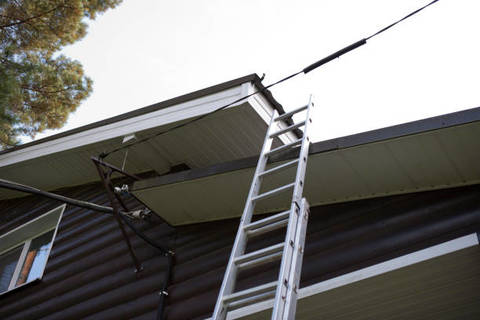
Façade Renovation in Luxembourg: How to Proceed
Façades are permanently subjected to urban and biological pollution. Stains may appear, due to infiltration, capillary rise or the effect of condensation. These problems linked to humidity can result in the deterioration of joints or in the detachment of paint, plaster and rendering. Cracks can even appear on exterior walls. Fortunately, there is a solution! Find out how to carry out a façade renovation in Luxembourg.
Give Your Façade a New Look
Façade renovation gives your house a new life while erasing the effects of pollution, rain, wind and sun.
It also helps to enhance the value of your property by modernizing its external appearance.
However, renovations are not just about aesthetics: they are also an excellent opportunity to do a check-up of the external insulation.
You may well find that you can improve your thermal and acoustic performance!
In short, renovating the façade of a building can have many objectives:
- Insulation from the outside;
- Simple pressure cleaning, to remove dirt, deposits and moss;
- Application of protective products;
- Filling small cracks and crevices;
- Application of a coat of paint or rendering.
To ensure the durability of the work to be carried out, it is essential to check the condition of the roof. Indeed, infiltration through the roof could damage the façade.
Façade Renovation in Luxembourg to Improve Thermal Insulation
Did you know that houses built before the 1970s have no thermal insulation?
Yet, walls are responsible for 25% of energy loss!
Therefore, renovating the façade, using the appropriate materials, will allow you to make significant energy savings.
For example, cladding or rendering not only renovates the façade, but also improves the thermal insulation of single-family homes and all residential buildings.
External Wall Insulation: Advantages and Disadvantages
Advantages
Insulation from the outside is increasingly favoured for two main reasons:
- It avoids the inconvenience of turning the interior of your home in a construction site;
- It ensures that the house is watertight.
The project then consists of providing the house with a sort of protective “coat”.
This has another crucial advantage: no fear of reducing the living space...
Besides, other benefits can be expected:
- Improved thermal insulation and therefore comfort (summer and winter);
- Energy savings;
- A more attractive house.
Disadvantages
On the other hand, it should be pointed out that insulation works from the exterior are generally more expensive, sometimes more complex (especially if there is a balcony or a veranda) or even impossible (attached houses).
In addition, unless they are moved slightly outwards to align with the façade (at extra cost), when an insulating layer is added, the windows are set back, reducing interior light.
Eventually, in the case of renovation, work on the façade often requires administrative authorization...
The Stages of Thermal Insulation from the Outside
First, the external walls have to be prepared for the insulation. This can be done with polystyrene, rock wool or wood fibre.
Depending on the material chosen, it can be:
- glued;
- wedged in place with glue dots and pegged;
- fixed to profiles.
The insulation is then covered with a protective layer to prevent damage from the weather: this can be an underlay, a coating or a sealing foil.
Eventually, wood or metal cladding, coating or rendering (depending on the type of finish required) will be added.
How can I Finance my Project with a Climate Loan?
Façade renovation in Luxembourg falls within the scope of the energy renovation aid set up by the Grand Duchy.
Owners of a building that is more than ten years old can obtain a climate loan (KlimaPrêt) at a reduced rate, or even a zero-interest loan for the most modest households.
This little help will always be welcome to finance your work!
Find more information on site of the One-stop shop for housing benefits!
